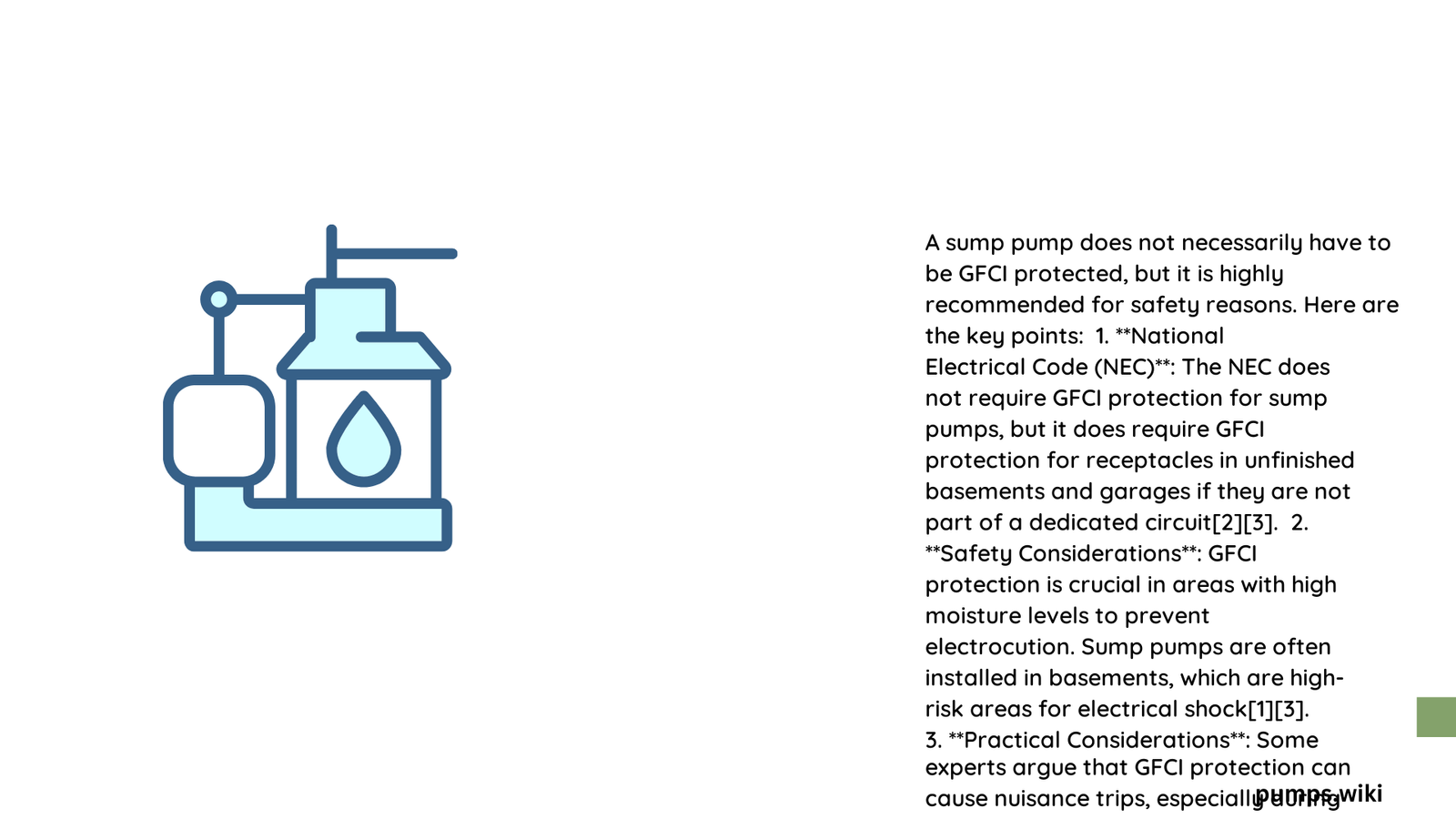Sump pumps are critical home protection devices that require specific electrical safety measures. According to the 2020 National Electrical Code (NEC), most sump pumps must be equipped with Ground Fault Circuit Interrupter (GFCI) protection to prevent electrical hazards in moisture-prone environments. Understanding these requirements is essential for homeowners to ensure electrical safety and code compliance.
What Are the NEC Requirements for Sump Pump GFCI Protection?
The National Electrical Code mandates specific guidelines for GFCI protection of sump pumps. Here are the key requirements:
Who Needs GFCI Protection?
- Sump pumps rated 150 volts or less to ground
- Sump pumps with 60 amperes or less
- Single-phase electrical systems
- Residential and commercial installations
Who Is Exempt from GFCI Requirements?
- Three-phase sump pump systems
- Pumps with ratings exceeding 150 volts or 60 amperes
How Can GFCI Protection Be Implemented?

Homeowners have multiple options for implementing GFCI protection:
- Upstream GFCI Device
- Install a GFCI circuit breaker at the main electrical panel
-
Provides protection for the entire circuit
-
GFCI Receptacle
- Use a dedicated GFCI-protected outlet
- Allows for localized ground fault protection
What Are the Risks of Not Using GFCI Protection?
| Risk Category | Potential Consequences |
|---|---|
| Electrical Shock | High risk of electrocution |
| Equipment Damage | Potential pump failure |
| Insurance Issues | Possible claim rejection |
| Code Violations | Potential legal and safety penalties |
Where Should the GFCI Protection Be Located?
Recommended installation locations include:
- Accessible areas away from potential water exposure
- Near the main living space
- Easily reachable for testing and reset
- Avoid installing in crawl spaces or flood-prone zones
What Are the Installation Best Practices?
Electrical Considerations
- Use appropriate wire gauge (typically 12-gauge for 20A circuits)
- Ensure circuit ratings match pump requirements
- Create a dedicated circuit for the sump pump
- Regularly test GFCI protection mechanisms
Additional Safety Recommendations
- Install backup power systems
- Consider water-powered or battery backup pumps
- Perform annual electrical safety inspections
What Are the Cost Implications?
- GFCI outlets: $20 – $50
- Circuit breakers: $30 – $60
- Professional installation: $100 – $300
- Total potential investment: $150 – $410
How Often Should GFCI Protection Be Tested?
Experts recommend:
– Monthly manual testing of GFCI functionality
– Annual professional electrical system inspection
– Immediate replacement if any malfunction is detected
Conclusion
GFCI protection is not just a recommendation but a critical safety requirement for most sump pumps. Homeowners must prioritize electrical safety by understanding and implementing these NEC guidelines.
